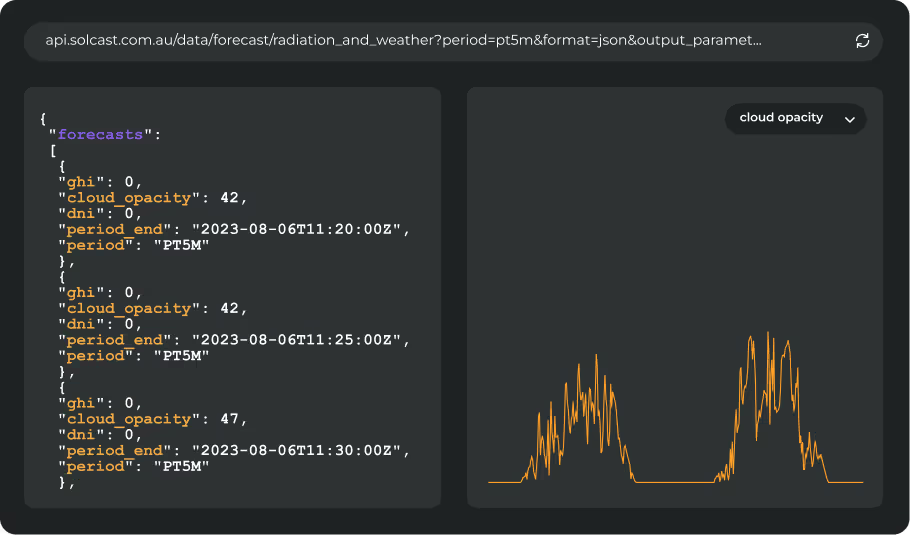Blocking high pressure over Eastern Europe in October created a strong east-west divide in solar irradiance across the continent. This setup trapped low pressure systems over Western Europe, leading to notably lower irradiance due to persistent cloud cover and rainfall, especially across the Iberian Peninsula and northern Italy. Meanwhile, Eastern Europe, shielded from these weather systems, received above average irradiance levels.
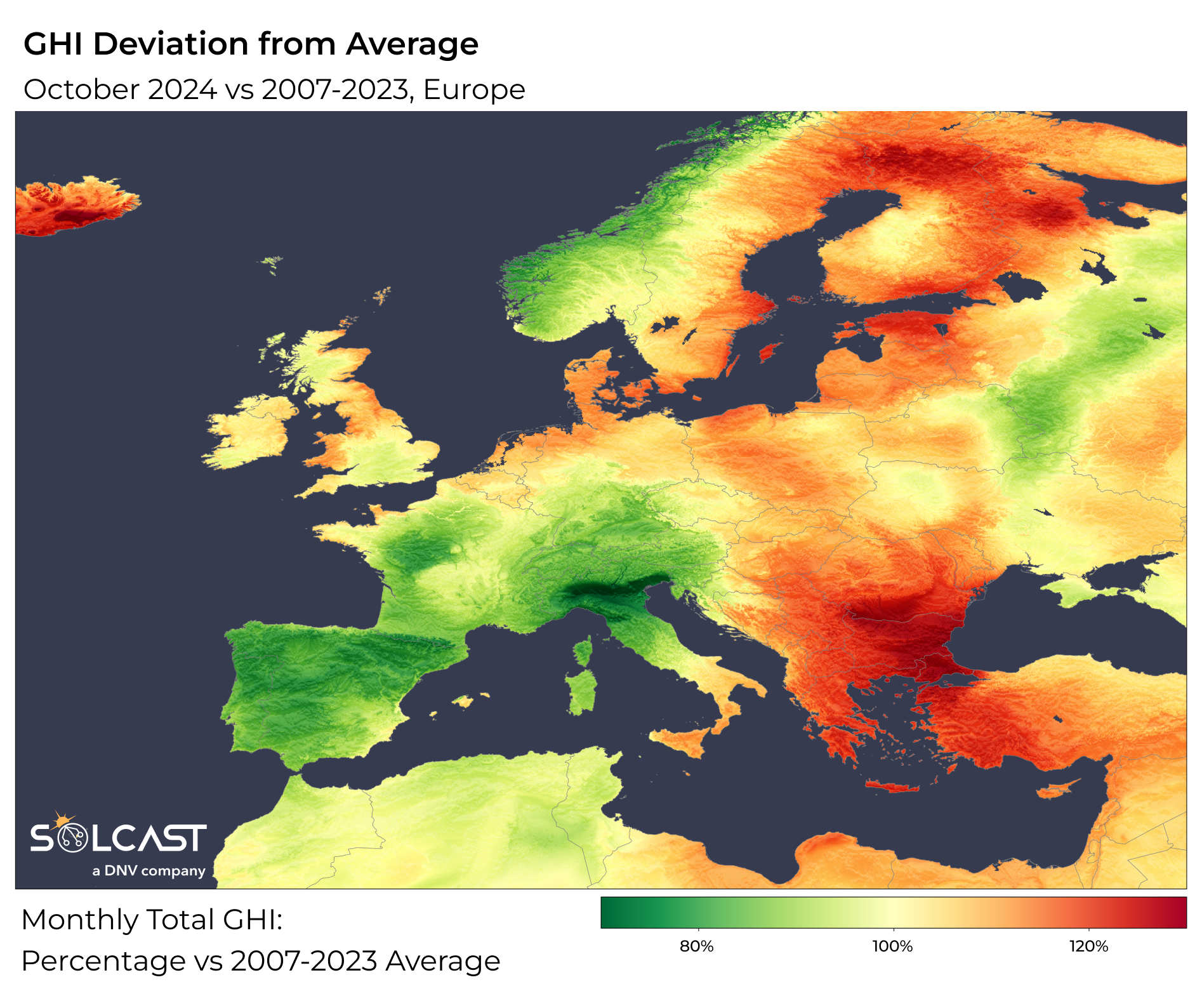
Western Europe saw October irradiance levels far below typical values, particularly in the Iberian Peninsula and northern Italy, where irradiance dipped 20–30% below the October average. Cloud conditions also brought rain with Valencia in Spain suffering from widespread flooding, whilst Milan saw over 2.5 times usual October rainfall. Persistent cloud cover and rain was triggered by low pressure systems moving in from the Atlantic interacting with warmer Mediterranean waters. A weak, meandering jet stream and high pressure blocking over Eastern Europe prevented these systems from moving eastward, causing them to stagnate over Western Europe - intensifying cloudy and rainy conditions. Daily irradiance data from Solcast shows how the low pressure system remained over the Iberian Peninsula from October 28-31, sustaining the cloud cover that reduced solar irradiance during this period.
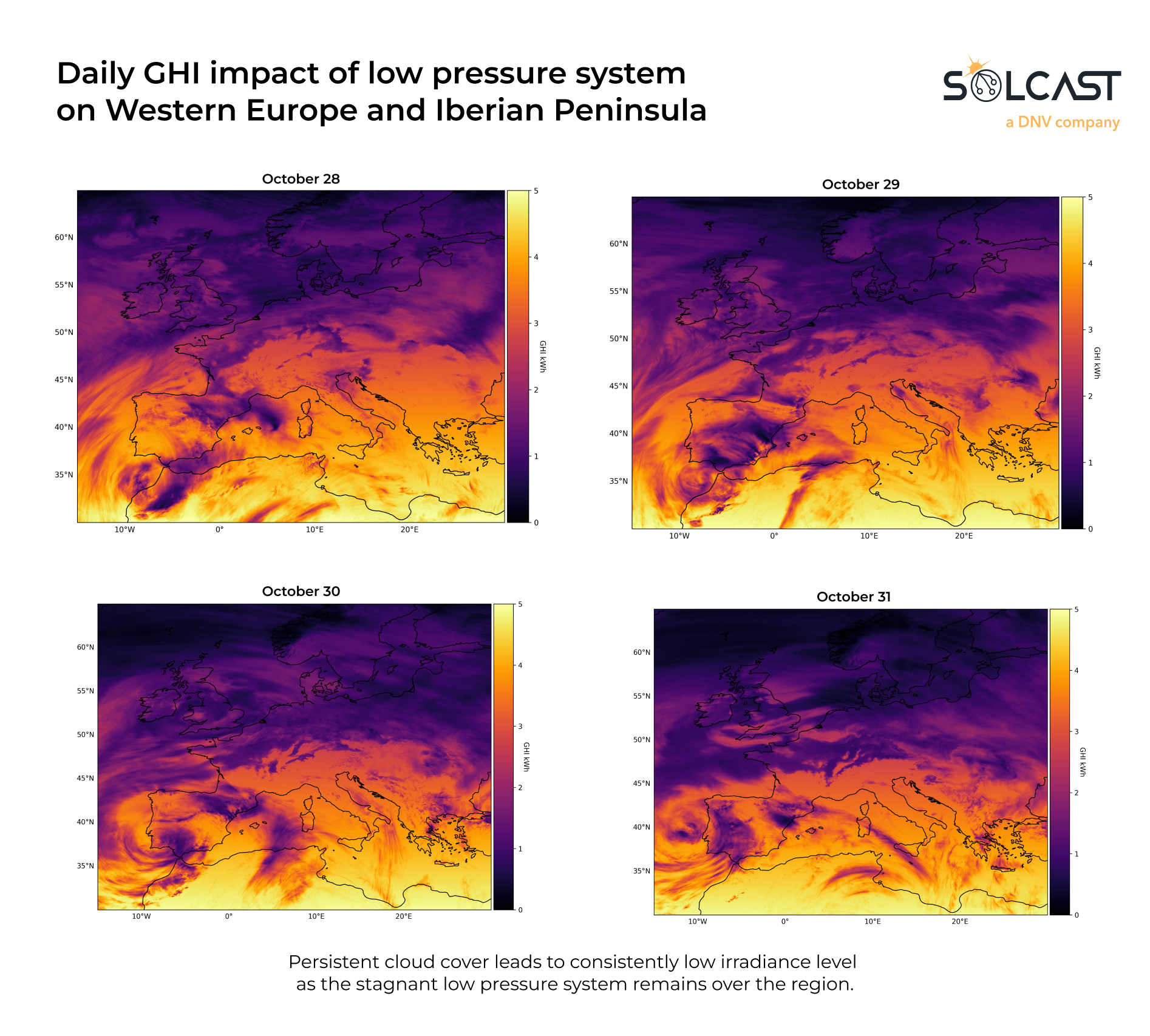
In contrast, Eastern Europe enjoyed significantly clearer skies. The high pressure that trapped clouds and rain in the west created stable and dry conditions across much of Eastern Europe, leading to 20–30% above-average irradiance levels in regions like Greece and Turkey. These areas remained largely shielded from the west’s turbulent weather, allowing solar conditions to remain favourable through much of October. This unseasonably high irradiance provided a boost for solar production, supporting a strong end to the autumn season for the region’s solar assets.
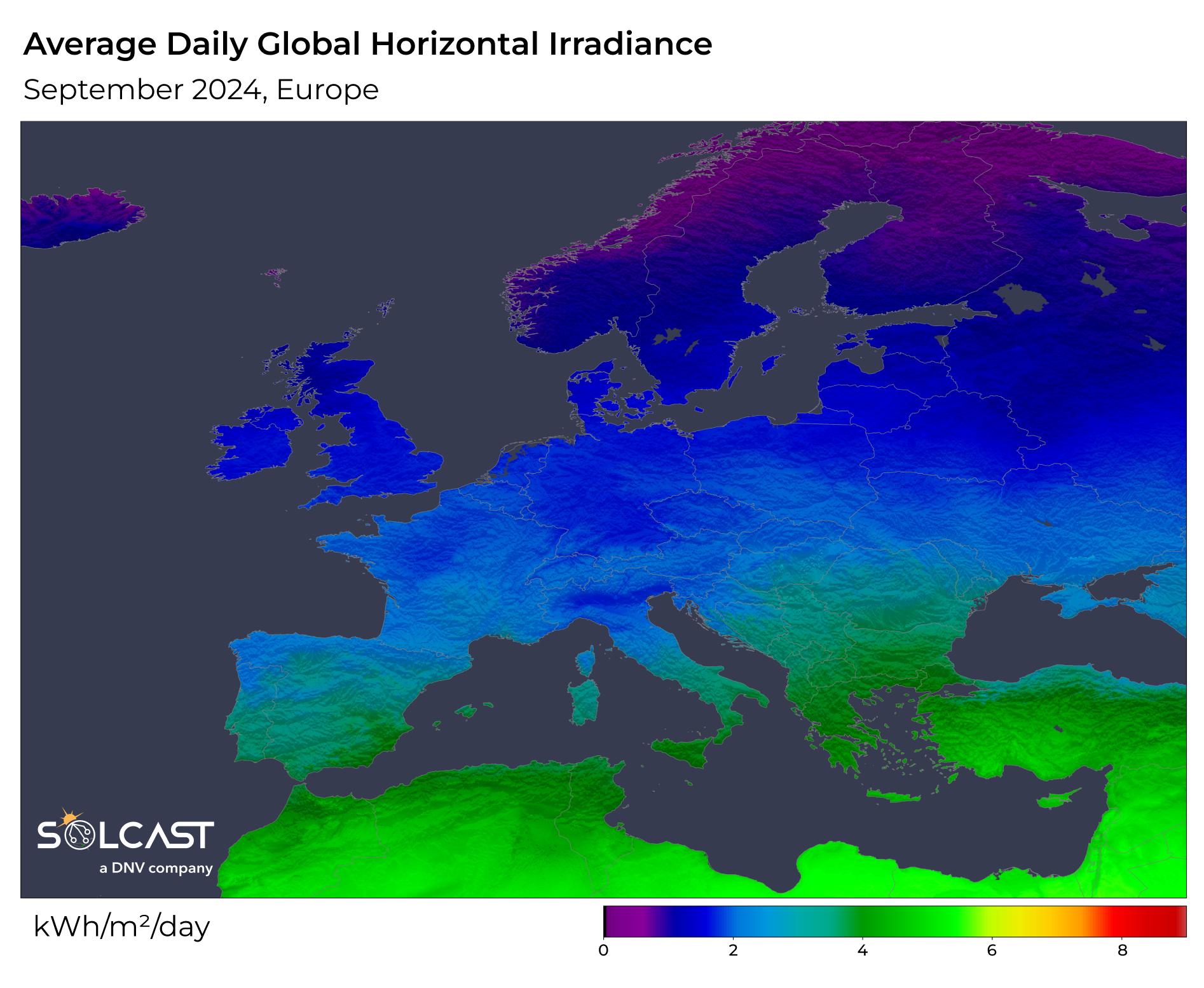
As Europe transitions into winter, irradiance has begun its seasonal decline, especially across higher latitudes. Although the British Isles experienced typical irradiance for October, they remained well below those of even a cloud-covered Spain, highlighting the region’s overall lower solar potential as winter approaches. October solar generation also varied, where output in France fell to 10.8% below the long-term mean (accounting for changes in capacity), while Italy saw a 15.3% deficit. In Germany, irradiance patterns diverged between northern and southern regions, with lower-than-average production in the south balanced by higher-than-average production in the north, leading to near-average overall solar generation.
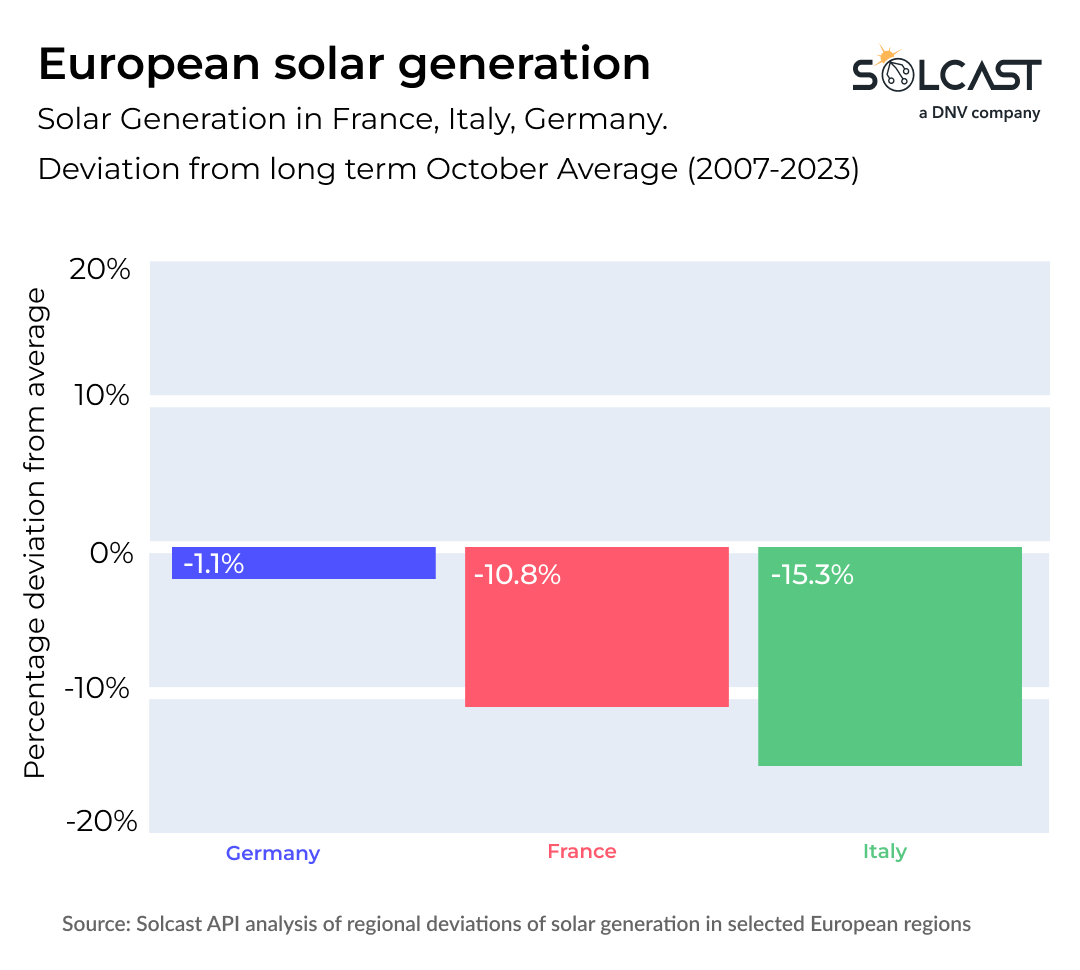
Track weather conditions, cloud movements, and irradiance-influencing factors that impact your solar generation. Access bankable actuals and accurate forecasts when you sign up for a Solcast API toolkit. You can reach out to our team for an extended trial.








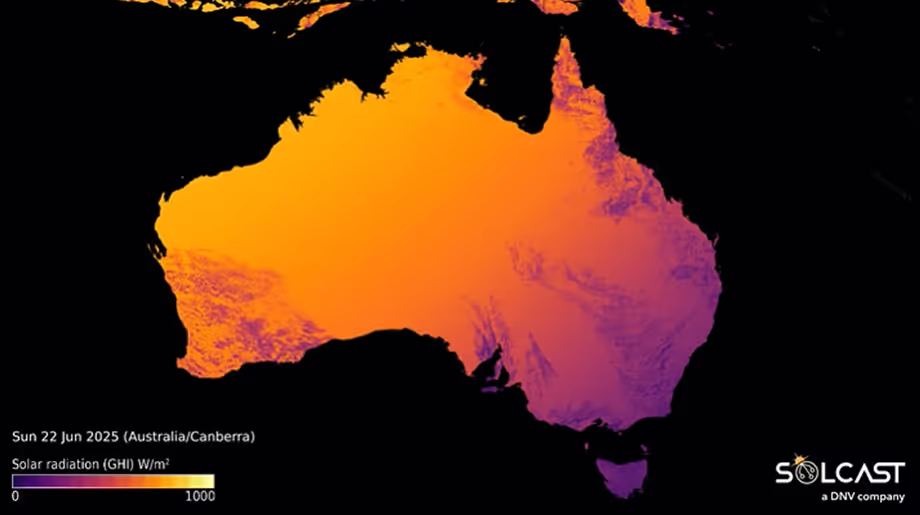
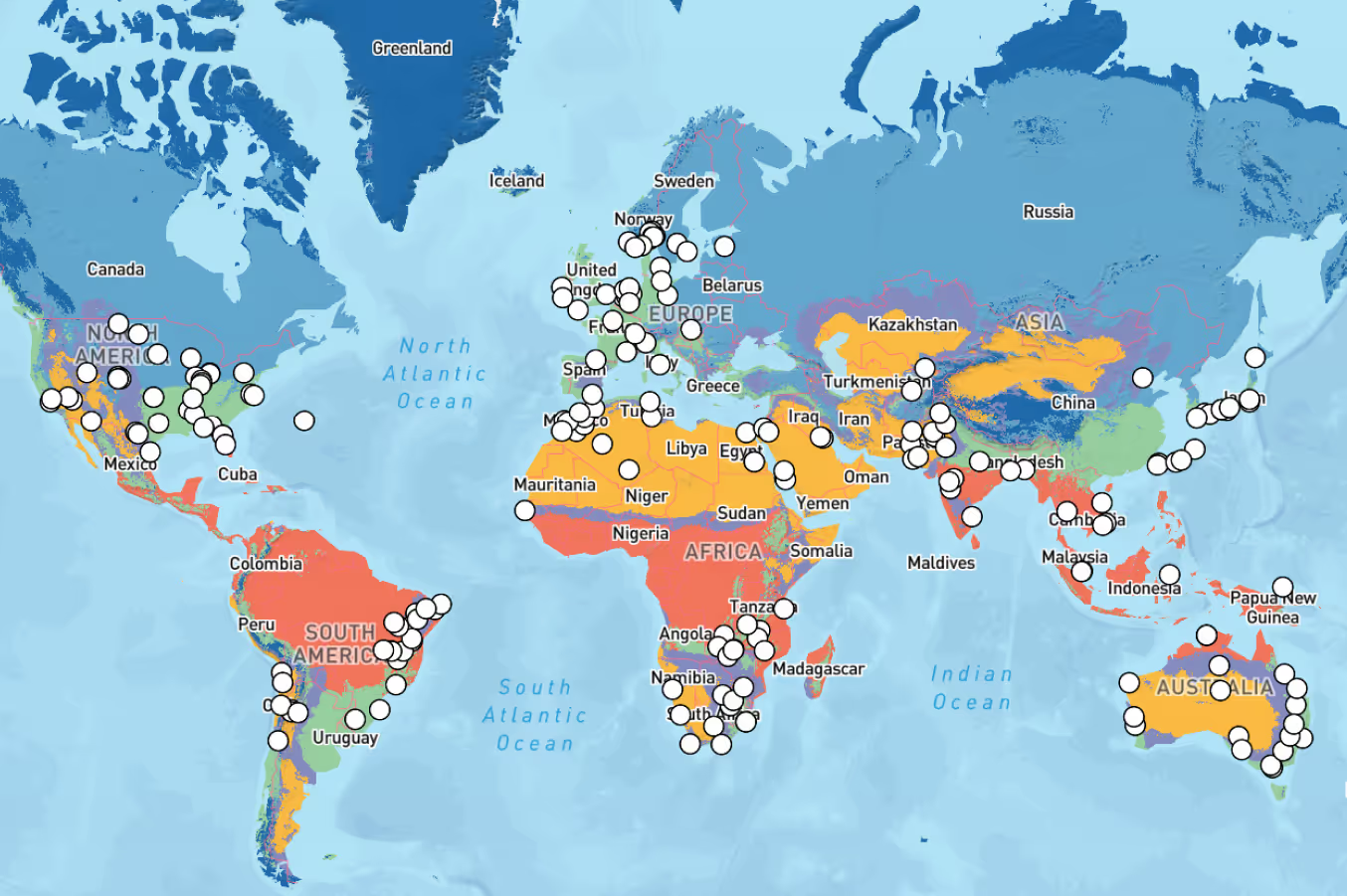
.avif)
